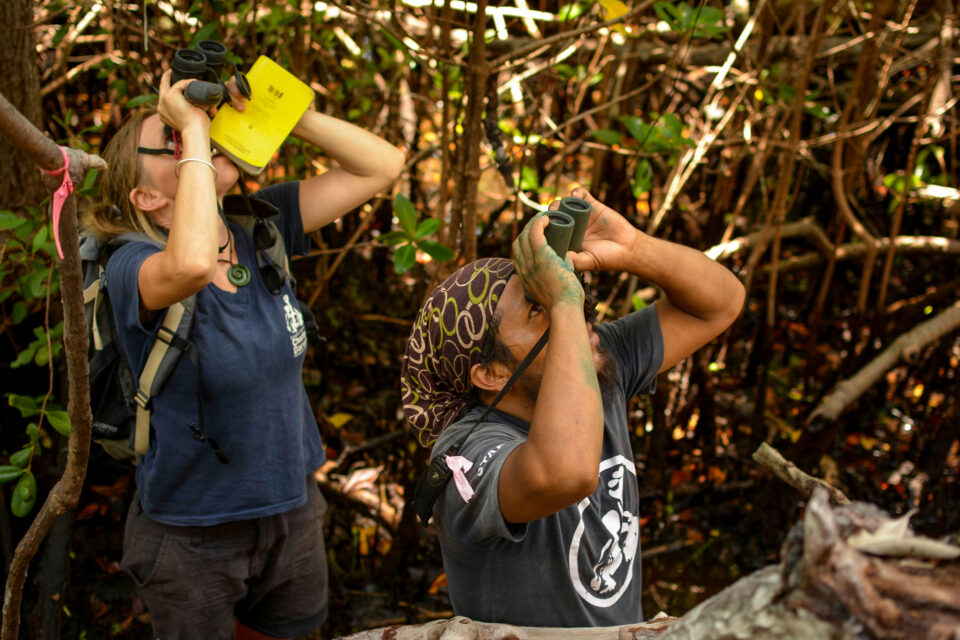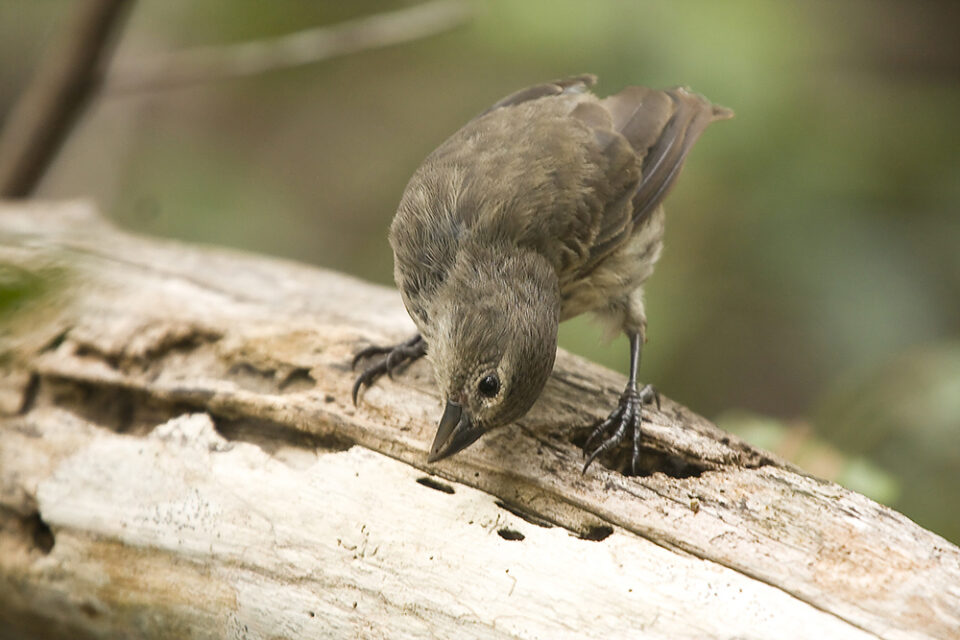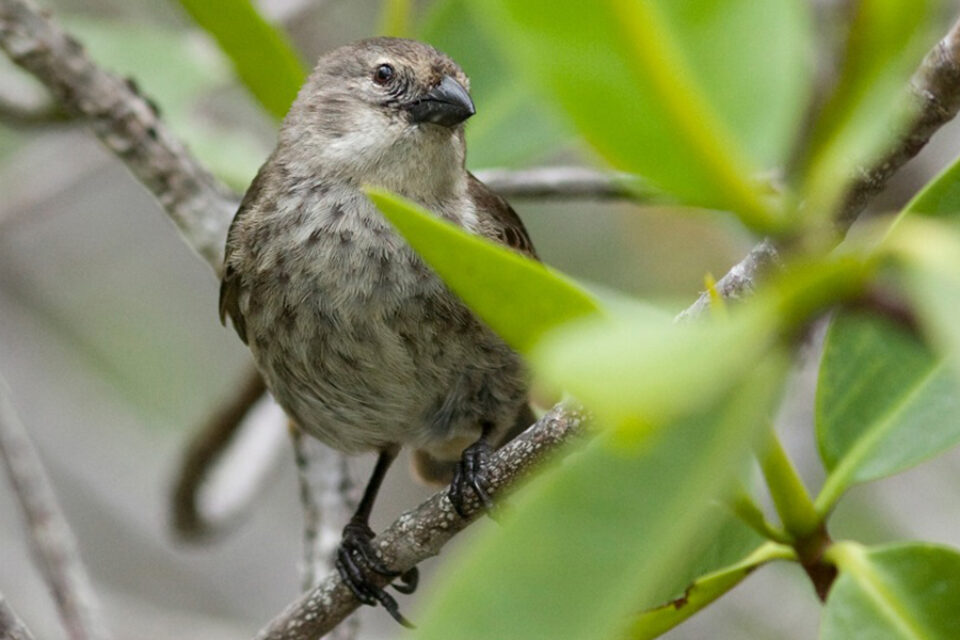

Mangrove Finch Project Update
In 2017/18 we continued our support for the Mangrove Finch Project, which is working to conserve the Critically Endangered mangrove finch.
For the last four years, Francesca Cunnighame and her team from the Charles Darwin Foundation (CDF) have been rearing chicks in captivity and then re-releasing them into the wild, a process known as ‘head-starting’. 39 fledglings have successfully been added to the wild population, which only has 20 breeding pairs, increasing the population of juvenile finches by over 50%. Excitingly, four of the captive-reared chicks were seen this year, including one female from 2016 which reared three chicks with a wild reared male!

Captive reared female mangrove finch collects nest material © Tui De Roy
This year, however, the team, in agreement with project partners and collaborators, decided to focus their efforts on protecting nestlings in their natural nests during the two-month peak of the breeding season.
A new method of intervention
With ongoing control of introduced rats reducing predation to low levels, the main cause of mangrove finch nest failure is the invasive fly, Philornis downsi. Following successful trials in 2017, the team, with logistical support from the Galapagos National Park, spent the 2018 field season injecting the bases of the nests with an insecticide, permethrin, to destroy the P. downsi larvae that parasitise mangrove finch chicks. This is only a short-term strategy – there is ongoing research into the most effective method to control P. downsi – but it involves fewer resources than head-starting the chicks.

Mangrove finch nest © Tui De Roy
Fifteen nests from nine pairs were injected at the base. While no negative effects to the birds were shown in the trials with permethrin, great care was taken to ensure that the chicks and/or eggs were not exposed to the solution. Results from the season were mostly positive. Seven birds successfully fledged from three injected nests that initially had the presence of P. downsi proving that the insecticide successfully killed the parasites. Sadly, in three nests injections were ineffective at killing the larvae, and the nests were found either empty or with dead chicks. However, combined with 14 fledglings from injected nests in 2017, a minimum of 21 chicks have survived in the wild from treated nests.
Project leader, Francesca Cunninghame, said “It’s great to know there’s a method that can protect nestlings from Philornis in the wild. However, mangrove finches and their nesting ecology in the tall mangroves don’t make this easy. We do our best to access the nests and protect the chicks and I think everyone out there in the field was really excited about these new methods. The finches are at such a critical stage that they really need intensive conservation during the breeding season and we must actively intervene to make sure as many as possible survive to fledge.”
Next steps
The next step is to evaluate whether this method should be used again next year instead of, or alongside, head-starting – this evaluation is being undertaken by CDF with partners San Diego Zoo Global and Durrell Wildlife Conservation Trust. There is also ongoing research from the Philornis Project which is looking at potential large scale control techniques that could produce a more viable method for protecting mangrove finches.
Please help us to continue to support this project by donating today!
The Mangrove Finch Project is a bi-institutional project carried out by the Charles Darwin Foundation and Galapagos National Park Directorate in collaboration with San Diego Zoo Global, Durrell Wildlife Conservation Trust and Auckland Zoo. The project is supported by Galapagos Conservation Trust, The Leona M. and Harry B. Helmsley Charitable Trust, Marguerite Griffith-Jones, GESS Charitable Trust, Decoroom Limited, Holbeck Charitable Trust, and Friends of the Galapagos Switzerland.
Related articles


Mangrove Finch Project update

Mangrove Finch Project update


